My son was just 16 months old and still crawling when we took him on his first overnight canoe trip. His grandparents were aghast, and they weren’t the only ones. Conventional wisdom dictates an adventurous life is over once kids enter the equation, but nothing is further from the truth when it comes to canoe camping.
Of course, taking your kids along for the ride isn’t without challenges. You may need to adjust the length, speed and difficulty of your trips, at least for a few years. Use these tips to overcome the most common barriers to canoe camping with young kids and get back into the woods. One day, your kids will thank you for it.
Challenges of canoe camping with kids
1 All that gear
Say goodbye to your dialed-in and ultralight gear system and to single-carry portages, too. Factor in a mountain of tiny clothing, must-have toys, bedtime books and diapers, and a toddler can amass as much gear as any tripper.
The number of things needed for such a small human can be truly staggering. Accept this new reality and the double-carry portages coming with it. Adjust your route and choice of canoe accordingly. Go slower.
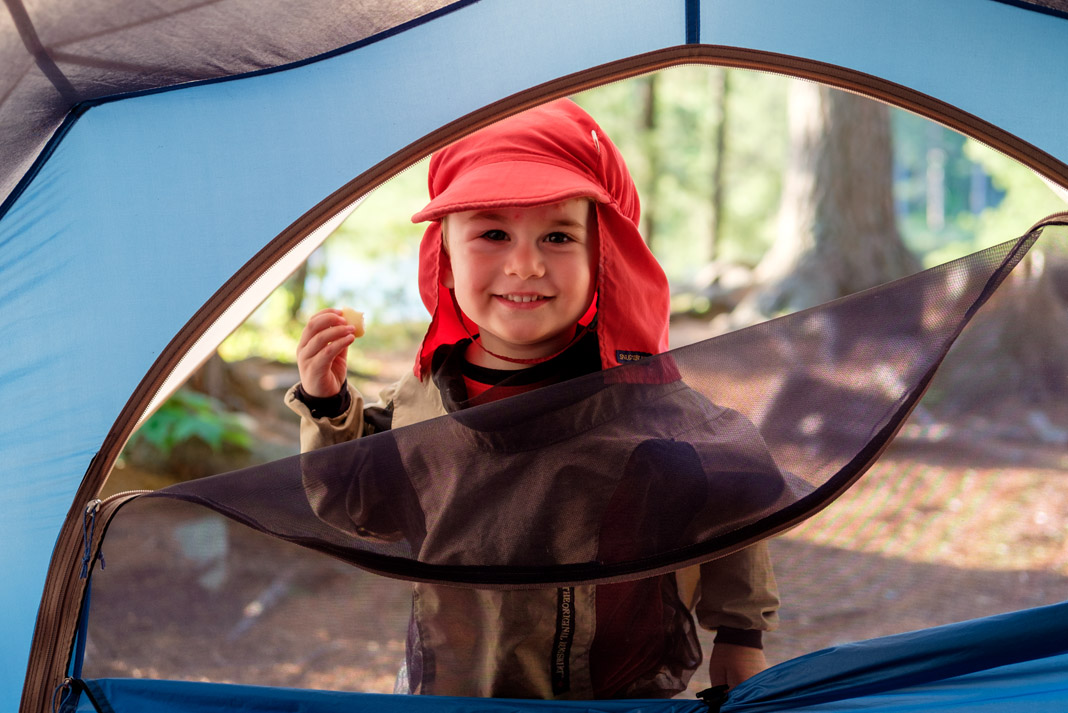
2 On-water boredom
It’s tough being a kid just sitting in a canoe. Even the littlest ones want to imitate their parents, so keep ‘em engaged by giving them a kid-sized paddle. The result may only be a handful of strokes, but that’s another story. Simple games, like a stick or rock pile to splash and throw in the water, can be hours of fun.
Keep snacks and toys accessible in the canoe. A slow pace and lots of shore breaks help—there are so many interesting things to explore when you view the world through a kid’s eyes.
3 Biting bugs
Itchy kids are unhappy kids. Kid-sized bug jackets and a screened shelter for cooking and playing games can save a buggy trip. Don’t forget a peaked hat to keep the bug jacket mesh off a kid’s face.
Barrier methods are extra important for protecting kids from biting insects since some repellants, like DEET, aren’t safe for tiny tots and shouldn’t be used regularly for kids under 12.
When bites do inevitably happen, have a plan B to take the itch out, such as Afterbite or an antihistamine.
4 Throw-down tantrums
Always keep a snack, or five, handy and ready at a moment’s notice to diffuse tantrums. Some of my favorites include M&Ms, gummy bears and beef jerky—anything I’d never feed my son at home.
Tantrums are inevitable whether you’re at home or in the woods, so don’t let this be a reason not to take your kids outdoors.
5 Lengthy portages
It’s one thing to put your head down and grind out a tough portage, it’s another when you’re dealing with an irrational child. I can confirm, “Suck it up, buttercup,” is not an effective strategy with a two-year-old.
Keep portages short when possible and break longer ones up with lunch or fun activities, like exploring a marsh. Save the three-kilometer portages for later—kids just don’t appreciate type two fun.
6 Good night sleep
A toddler might love the idea of sleeping in a tent, but the actual transition can be a challenge without the familiarity of home. Pre-trip, set up the tent in your backyard and get in there with your sleeping bags—maybe even spend the night.
On trip, keep bedtime routines similar to home—wash up, pajamas, books and songs. For naps, set up a cozy place in the canoe and try to time longer stretches of paddling with regular nap times.
7 Nature’s call
While adults might find a certain freedom in being able to drop trou and go about their business in the woods, for younger kids this can be an intimidating and finicky mess.
Offer support, give encouragement, swat away those pesky bugs and accept your perfectly toilet-trained child will soil their last clean and dry pair of pants on the buggiest portage imaginable. True story.
Nothing worth doing is easy, so might as well bring your kids along for the ride. | Feature photo: Ariel Estulin



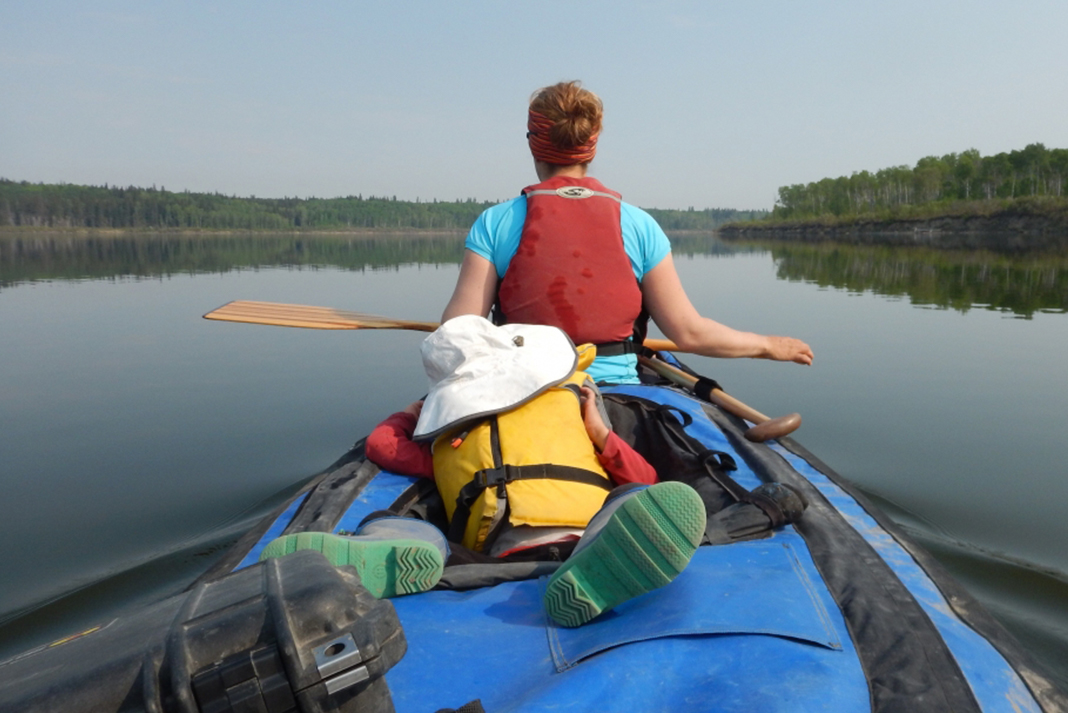
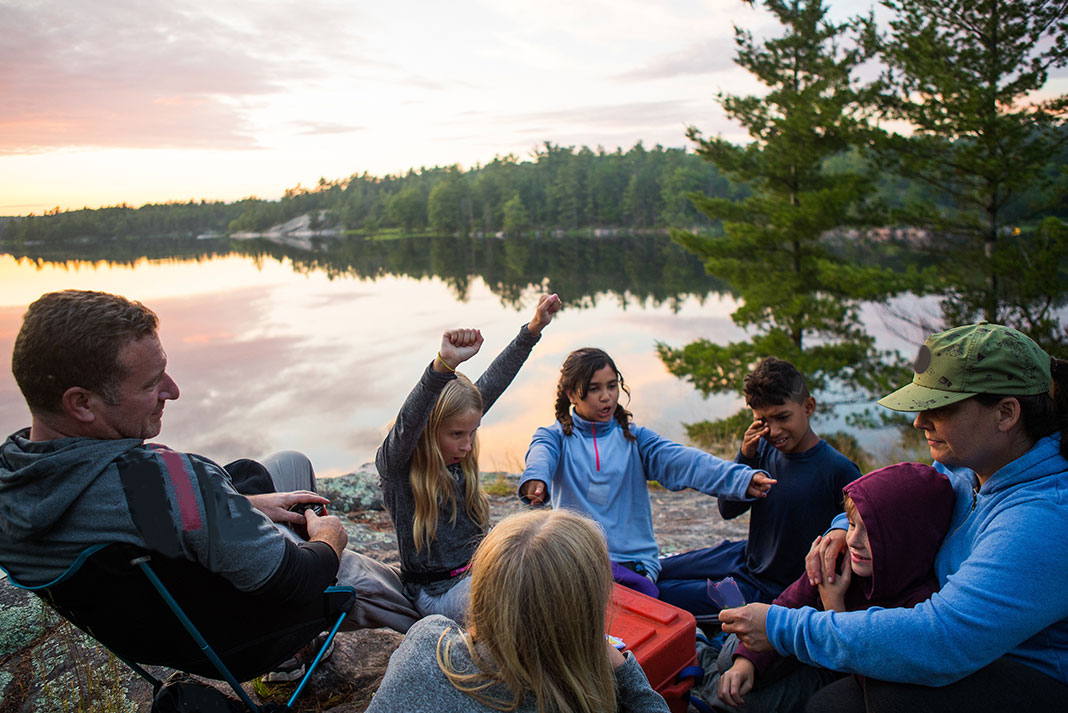
 This article was first published in the Summer 2018 issue of Paddling Magazine.
This article was first published in the Summer 2018 issue of Paddling Magazine. 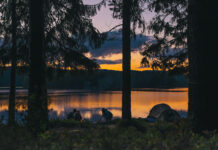
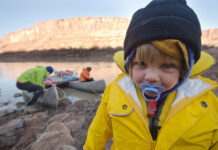
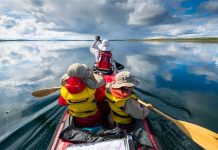
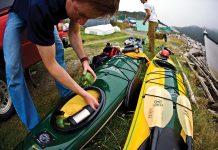
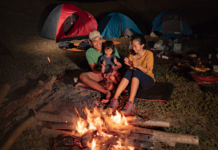

Obviously written about very young “kids”…hopefully older kids are thought of as impressionable so having good skills to share is important. Also, so many ways to encourage respect and safety in the outdoors: encourage them to wear a proper-fitting life jacket sized by physical features of kid not just age. Providing them with a whistle and how to signal…Make all these special rites of passage as the child learns. Make it prestigious to have their own whistle, special bright colored “camp jacket”, etc. Set a good example and develop your own skill sets too, you’ve got your family depending upon you.
Good article. Agreed about properly-fitting PFD and whistles, too. (I’d suggest standardizing whistle-signals: one toot is a contact-call meaning “Here I am.” Appropriate response: same signal, “Here I am, too.” Three toots means any kind of an emergency. Discuss what emergencies might arise. In three trips to Algonquin and one on the Spanish River with my 7-11-year-old nephew, no emergencies arose. But we had a signal prepared, if they did.)
A kid’s paddle is not just a shorter adult paddle. All of the kids’ paddles I’ve ever seen were too heavy, with too-big paddle-shafts and top-grips for the kid to hold and use effectively without fatigue. I always made my own, lightweight and with a shaft as small as 3/4″ diameter for the littlest ones.
Lastly, the kids have to help doing the work. Carrying loads, finding firewood, setting-up the tent; these are all parts of the trip that kids can actively participate in.